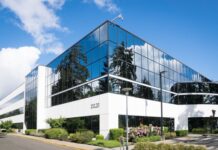Photo from Pixabay.com
Commercial roofs are crucial for protecting businesses from the elements and ensuring the safety of the occupants. Over time, wear and tear can leave a roof vulnerable to various issues that, if caught early, can save property owners significant costs. Recognizing these problems before they escalate is essential for maintaining the roof’s integrity and prolonging its lifespan. Below are six common commercial roofing issues, along with insights on how to detect them early and maintain a durable roof.
Leaks and Moisture Damage
Many commercial roofs may experience leaks due to various factors, including poor installation and material degradation. Inspecting your roof regularly is vital, particularly after severe weather. Look for water stains on ceilings, walls, and floors, which can indicate compromised roofs. Furthermore, when left unaddressed, moisture damage can lead to mold growth and structural deterioration. Utilizing the expertise of commercial roofing specialists can help pinpoint problematic areas and keep your building dry. These specialists will also recommend conducting evaluations at least biannually, adjusting for local climate conditions. Regular inspections combined with insights from commercial roofing professionals can safeguard against expensive repairs and improve the building’s overall performance.
Blistering and Bubbling
Blistering or bubbling on roofing materials is often a sign of trapped moisture. These blisters form when water seeps between the roof layers, creating pockets that weaken the roofing material. If left untreated, this can deteriorate the roof further and may lead to severe damage. Regular roof inspections can help catch these signs early. Property owners should look for raised sections on the roof or areas that feel spongy underfoot. Ensure that your maintenance team is familiar with identifying blistering, especially around seams and joints, where leaks are more likely to occur. Addressing blistering promptly can prevent more severe issues and extend the lifespan of the roofing system.
Pooling Water
Pooling water is a common issue for flat roofs where drainage can sometimes be insufficient. If you notice stagnant water collecting in certain areas, this can lead to increased stress on the roof and hasten deterioration. Additionally, stagnant water can accelerate the growth of algae and moss, leading to premature wear. Property owners should inspect drains and downspouts regularly, ensuring they are clear and functioning well. Installing crickets or saddle points during maintenance can also help divert water to drainage areas effectively. Keeping gutters clean and in good shape will help prevent pooling.
Punctures and Penetrations
Punctures can happen due to various factors, including falling debris or heavy foot traffic on the roof. Roof penetrations, such as vents, HVAC systems, and skylights, are vulnerable spots that need careful monitoring. Visually inspecting the roof surface, especially after storms or repair activities, can help identify these issues. Tar or sealant might cover some punctures, making them less visible. Therefore, always check for signs of wear or damage after maintenance or installation of rooftop equipment. Addressing punctures promptly can prevent more significant issues, including leaks and exposure to harmful elements.
Damaged Flashing
Flashing is the metal material used to seal joints and transitions on roofs. It is a critical component that prevents water from entering vulnerable areas of the roof, such as joints and around chimneys or vents. Damaged or improperly installed flashing can lead to severe leaks. Regular inspection of flashing is crucial to check for deterioration, rust, or any form of separation from adjoining roofing materials. Scheduled visual checks around chimneys, vents, and other protrusions can help identify issues quickly. If not repaired promptly, they can lead to larger openings that invite moisture. Repairs can often be made with sealant or replacement of the damaged section, but these must be done immediately to avoid further issues.
Granule Loss on Shingles
If your commercial roofing uses asphalt shingles, granule loss can be a significant issue. These granules protect the underlying materials from ultraviolet damage and provide a waterproof layer. Look for piles of granules in gutters or around the property; their presence is a clear indication of shingle deterioration. Early detection can help you avoid complete roof replacement; however, it’s essential to consult with professionals to determine the best course of action before extensive damage occurs.
Photo from Pixabay.com
The early identification of roofing issues can facilitate timely interventions and save businesses from costly repairs. Routine inspections and maintenance are vital for enhancing the lifespan of commercial roofs. By paying attention to signs like leaks, blistering, pooling, and granule loss—and utilizing the support of experienced professionals—you can protect your investment and ensure a safe environment for your building’s occupants. By performing thorough evaluations and addressing existing concerns promptly, businesses can maintain the integrity of their roofs and avoid unnecessary expenses.





